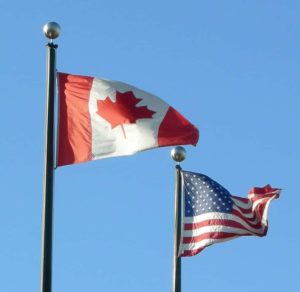
(NAFB) – The world’s longest undefended border is now one month into its second year of restricted access. Those persons crossing the Canada-US border must fall within essential work and travel categories, and it’s been this way since March 21st of last year. The most recent border closure-extension notice came this week, with an expiry date now set for May 21.
Transported parts, supplies and hard-goods for North America’s inter-connected agricultural industry fall under essential categories. So, for the most part, commodities and agri-food have not been broadly affected. But individuals who supply so-called soft services: professionals, traders and salespeople, are having a much harder time crossing the border.
Mark Larner an international trade lawyer practicing in Toronto, says that up to this point it has been Canada that’s held a firmer hand on controlled border access.
Tourism is a primary revenue producer for some smaller cities and towns. The tourism industry has been especially hard hit due to the pandemic. Jim Diodati mayor of Niagara Falls, Ontario, says that, for his town, a second season of border restrictions would be disastrous.
While Canada’s population was not hit as hard as the US population initially, Canada is lagging behind in its vaccination schedule due to ongoing vaccine shortages. Canada has no vaccine production facilities, so must purchase and receive the drugs from other countries including the US.
Mark Larner says he believes that re-opening the border in stages might be the way to go. Larner says this could be done by classifying some professional work sectors as essential. But he thinks a re-opening the border based on vaccine rates likely would not work for Canada.
